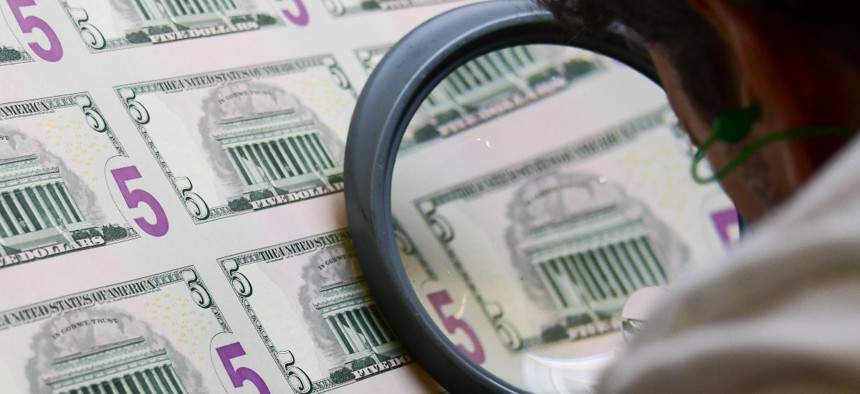Treasury Looks for New Tech to Prove Physical Money is Legit

An employee examines a sheet of 5 USD notes as it comes off the printing machine at the US Treasury's Bureau of Engraving and Printing in Washington, DC July 20, 2018. EVA HAMBACH/AFP via Getty Images
The counterfeit detection methods could include both device assisted and non-device assisted features.
The Treasury Department’s Bureau of Engraving and Printing filed two requests for information on Friday to improve “counterfeit deterrent features on future” U.S. currency.
The agency is looking to obtain, test and evaluate these technologies or materials that could be used as counterfeit deterrent features. Treasury noted that the proposals should have deterrent features that are “novel and that are not otherwise in commercial use of the public domain.”
Treasury is exploring both device-assisted and non device-assisted counterfeit deterrent features on future American currency that are challenging to simulate or duplicate but could be easily authenticated by members of the public.
For non device-assisted technologies, such verification would have to be possible under most lighting conditions. A device-assisted technology would rely on a readily available, inexpensive device, like optical filters, magnifiers, cheaper laser pointers, LED flashlights, magnets and cellphones.
The non device-assisted deterrent method should have “overt, visual authentication features for public usage” on future currency, according to the RFI. These can be incorporated into the banknote—such as inks or substrate—or applied to it.
The agency added that this technology should provide deterrence from all counterfeit threats—such as traditional printing and digital reproduction—and resist simulation with commercial materials.
Treasury will review the “inherent and relative effectiveness” of the submitted technologies or materials as a security feature and may test for other factors like durability, compatibility with design and production considerations, environmental complications and other requirements.
Respondents should submit preliminary samples and a brief technical description to BEP’s Office of the Chief Procurement Officer.
Responses are due March 13 at 2pm EDT by either email or mail.



